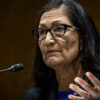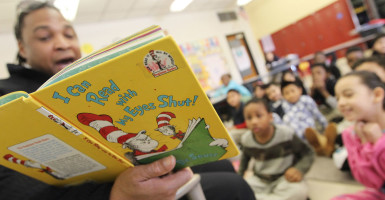A recent report by the Thomas B. Fordham Institute ranking America’s best and worst cities for school choice includes two consistent winners—New Orleans and Washington, D.C.—at the top, and a trio of Texas cities in the bottom half of the 30 areas surveyed, with Albany, N.Y., bringing up the rear.
Fordham considered three criteria: political support, policy environment, and quantity and quality of school choice. After New Orleans and Washington, Denver rated third in 2015. Rounding out the top 10 were Indianapolis, Columbus, Milwaukee, Newark, Oakland, Atlanta, and Detroit. At the bottom were Pittsburgh, Austin, and Albany.
With nearly all students (91 percent) being educated in charter schools, it’s not hard to understand why New Orleans takes the top spot. After the devastation of Hurricane Katrina, school choice provided a fresh start for students in that city. But the election of Louisiana Governor John Bel Edwards has cast doubt on whether the future of school choice in Louisiana will be as bright as its past.
In 1995, federal legislation led to an explosion of charter schools around Washington, D.C. They have grown steadily in the 20 years since, and charters now make up 44 percent of educational market share in the nation’s capital.
Denver comes in third, with a school district that is supportive both of charter schools and innovation within the public school district. Although charters account for only 16 percent of the market, it is this openness to innovation that lands the city a spot so high on the list. Denver’s common charter enrollment system has been praised for making it easier for traditionally disenfranchised students to apply.
For the cities at the bottom, the story is different.
In Pittsburgh, charter schools were authorized 18 years ago but hold only a 10-percent market share. The school board continues to deny nearly every charter application it receives.
Charter schools have only 9 percent of the market in Austin, Texas, despite a 20-year history of school choice. The cap on charter schools will be raised in the next several years, which will add more opportunity, but private school choice legislation has repeatedly failed to pass.
Coming in last is Albany. Although charter schools in New York’s capital city have a 26-percent market share, quality is going down, and the political climate is growing increasingly hostile, according to the report. The city ranked 26th out of 30 for political support and last in policy environment.
“While school choice opportunities have increased nationwide,” the study concludes, “our results reveal considerable variation among cities.” It found that, in the top-ranking cities, school choice was the way leaders chose to reform education, while other cities provide few options and have made it difficult for school choice to flourish.
The study includes some obvious fixes, as well as some that are more of a surprise.
Among the obvious, the study recommends that cities “expand voucher programs and relax their eligibility requirements. Decrease or eliminate restrictions on the number and type of charters. Tie an expanded pool of options to stronger accountability systems. Shut down low-performing schools, so we aren’t creating a market where bad schools recruit students.”
The report includes four less obvious paths that cities can take: provide resources for charters that are truly equitable, expand intra-district choice, make choice more user-friendly for parents, and keep mobilizing external and stakeholder support for choice.
Originally published at ColoradoWatchdog.org.



























